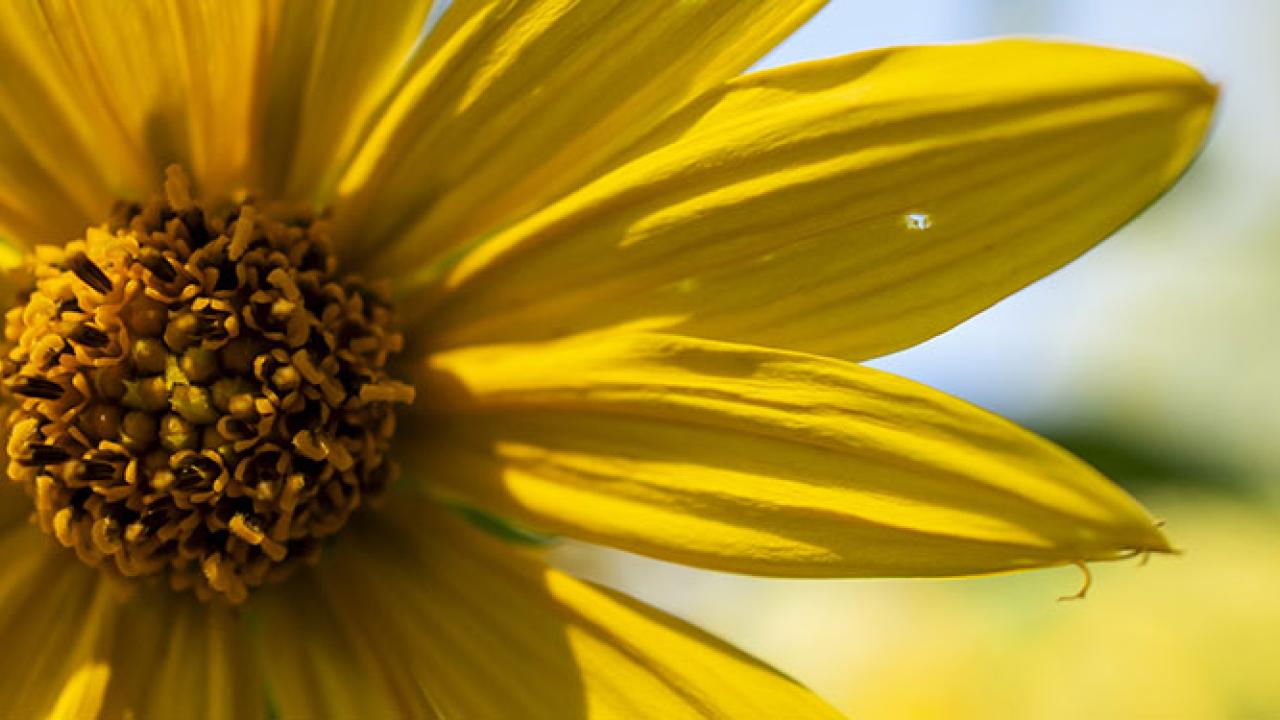

What's in Bloom
Bloom Highlights

Cryptomeria japonica ‘Little Champion’
Little Champion Japanese Cedar
Cryptomeria japonica is native to south-central and southeastern China and Japan, where it grows in deep, rich soils of warm, moist, temperate forests. It is a needled evergreen tree with a dense, pyramidal form. The stems emerge green and mature to produce exfoliating, reddish-brown bark. The branches are whorled and grow horizontally and droop slightly. The main stem and branches spirally bear glossy, awl-shaped, needle leaves that are bright blue-green and curve inward with a minor twist. These needles last four to five years. Plants are monoecious—meaning they produce small male and female cones on the same plant. The cones are tiny, woody, and hard to find. This cultivar is noted for its compact, rounded form. The genus name comes from the Greek words kryptós meaning “hidden” and meris meaning “part,” referring to the hidden nature of the floral parts within the cone scales. The specific epithet means “of Japan.”

Hedera helix
English Ivy
This plant’s native range spans throughout Europe from Portugal to western Russia, from the Mediterranean to the British Isles and Scandinavia, where it grows in forests and woodlands and in riparian areas. This woody vine perennial creeps prostrate along horizontal surfaces and will readily climb any vertical structure. The smooth, round stems are green. They develop coppery exfoliating bark and produce adventitious roots that aid climbing. Stems alternately bear glossy, leathery, dark green leaves that are palmately lobed with three to five lobes that feature light green to white veins. Flowers are produced from leaf axils in umbel clusters and are green and insignificant. They produce black drupes in autumn. The genus name is the Latin word for ivy, while the specific epithet is Greek for “spiral” or “twisted” in reference to the twining stem. This plant is considered invasive in many states; the Chicago Botanic Garden has it on a watch list.

Juniperus virginiana ‘Hillspire’
Hillspire Eastern Red Cedar
Juniperus virginiana is native to much of North America east of the Rocky Mountains, where it is found in many habitats including prairies, savannas, swamps, marshes; on bluffs, cliffs, and mountainous ridges; and along river and stream banks. It is a needled evergreen tree with a dense, pyramidal habit. Stems produce many aromatic branches and grey, reddish-brown bark that exfoliates in long strips. The branches bear scale-like, awl-shaped needle leaves that are dark blue-green and whorled in threes or in opposite pairs. These trees are dioecious—meaning male and female flowers are on separate plants. The male cones are insignificant and yellow. Female cones are larger, berry-like, and blue with a white waxy covering. This cultivar is noted for its slender, upright form with dense, cypress-like foliage. The genus name is the Latin word for juniper trees, and the specific epithet means “of Virginia.”

Pinus bungeana
Lace-Bark Pine
This plant is native to north-central, south-central, and southeastern China, where it is found in rocky, limestone soils of mountainous temperate forests. It is a needled evergreen with a rounded, multistemmed habit. Stems are smooth and grayish-green and branch irregularly. They produce smooth grey bark that starts to exfoliate after ten years, revealing patches of olive green, burgundy, white, and silver. The exposed patches fade to white with age. Branches bear glossy, dark green needle leaves that are prickly and clustered in bundles of three. These trees are monoecious—meaning male and female flowers are on the same plant. Male cones are yellow, clustered, and insignificant, while female cones are larger, coppery brown, and grow solitarily or in pairs laterally or terminally from mature branches. The genus name is the Latin word for pine trees. The specific epithet is in honor of Alexander von Bunge, a nineteenth-century Russian botanist.

Thujopsis dolabrata ‘Variegata’
Variegated False Arborvitae
Thujopsis dolabrata is native to the cool, moist woodlands of Japan. It is a needled evergreen with a pyramidal form. The stems are coppery brown and branch horizontally in stacked planes. The branchlets grow in a single plane and droop slightly. The stems and branches produce light brownish-grey to burgundy bark that exfoliates in flaky, vertical strips. The branches and branchlets are clad in fleshy, leathery, scaly leaves produced in opposite pairs and are lanceolate with white stomatal bands on their undersides. Male cones are insignificant. Female cones appear solitarily from the termini of branches and are small, woody, thick, and coppery. This cultivar is noted for bold variegation of branchlet awl-like needles. The genus name is derived from the related genus Thuja and the Greek word -opsis meaning “looks alike.” The specific epithet is Latin for “hatchet shaped” referring to the shape of the stomata.

